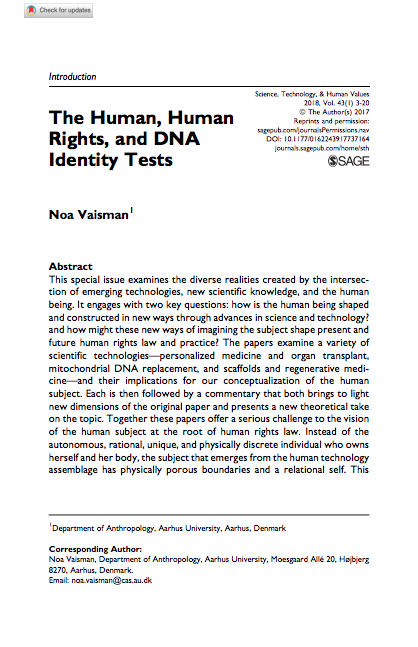
"This special issue examines the diverse realities created by the intersection of emerging technologies, new scientific knowledge, and the human being. It engages with two key questions: how is the human being shaped and constructed in new ways through advances in science and technology? and how might these new ways of imagining the subject shape present and future human rights law and practice? The papers examine a variety of scientific technologies—personalized medicine and organ transplant, mitochondrial DNA replacement, and scaffolds and regenerative medicine—and their implications for our conceptualization of the human subject. Each is then followed by a commentary that both brings to light new dimensions of the original paper and presents a new theoretical take on the topic. Together these papers offer a serious challenge to the vision of the human subject at the root of human rights law. Instead of the autonomous, rational, unique, and physically discrete individual who owns herself and her body, the subject that emerges from the human technology assemblage has physically porous boundaries and a relational self. This depiction of the human being as a relational subject enmeshed in her technoscientific environment requires that we reconceptualize human rights law and practice."
Keywords: futures, alternative life forms, human rights, biotechnology, the human, law
Noa Vaisman, "2017. Vaisman. "The Human, Human Rights, and DNA Identity Tests"", contributed by , STS Infrastructures, Platform for Experimental Collaborative Ethnography, last modified 27 May 2018, accessed 9 April 2025. https://stsinfrastructures.org/content/2017-vaisman-human-human-rights-and-dna-identity-tests
Critical Commentary
This 2017 article by Noa Vaisman introduces a special issue of STHV that examines the diverse realities created by the intersection of emerging technologies, new scientific knowledge, and the human being, offering a challenge to the idea of the human subject that binds together human rights law.